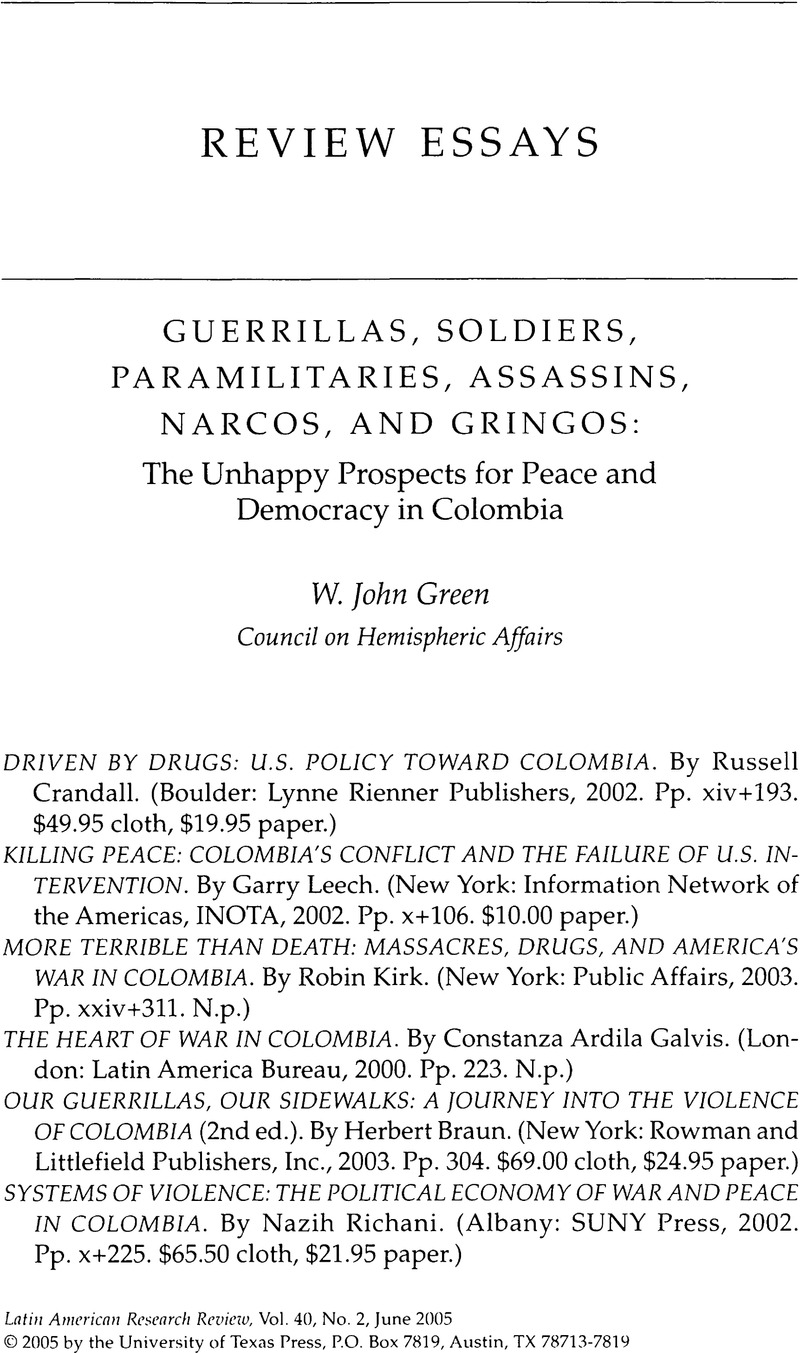Published online by Cambridge University Press: 05 October 2022

1. By presenting a list of some of the 150 or so Colombian graduates of the SOA, Leech begs the question about the School's importance in Colombia. While it is true that the United States trains Colombian soldiers, it is also true, as I discuss further on, that Colombians have been employing different types of government sponsored, or at least sanctioned, death squads since the late 1940s. The forces of Colombian reaction do not need the gringos to teach them how to intimidate, murder, and massacre their “subversives.”
2. In passing it should be noted that SUNY Press did a sloppy job of editing what is otherwise an excellent book. The text and notes display consistently clunky sentences, and so many grammatical rough spots, missing accent marks, and spelling mistakes that it does begin to distract at times. Authors non-native to English deserve better.
3. As unassailable as this stance may be, Roldán nevertheless seriously misstepped with her use of photographs. She “demurred” regarding the use of photos of the Violencia proper, arguing that “[m]ost of the existing images of the period were ones used to fan partisan hatred by one group against another and were almost without exception lurid representations that exploited the victims and titillated the viewer but contributed little to a deeper understanding of the complexity and human sorrow of violence” (vii). Instead, she included photos of the more recent violence in Antioquia taken by Jesús Abad Colorado between 1998 and 2001, and placed them throughout the book to illustrate her narrative. This decision is deeply problematic on two levels. First, it is simply preposterous to disregard an entire genre of historical documents by pronouncing them “lurid representations.” She has not proved this assertion, and in any case, it is the historian's job to deconstruct and interpret documents, photos included. Second, though there are clear parallels and continuities between the 1946–1953 and 1998–2001 periods, they are not identical. We might as well illustrate the War of a Thousand Days with photos taken during the Violencia.